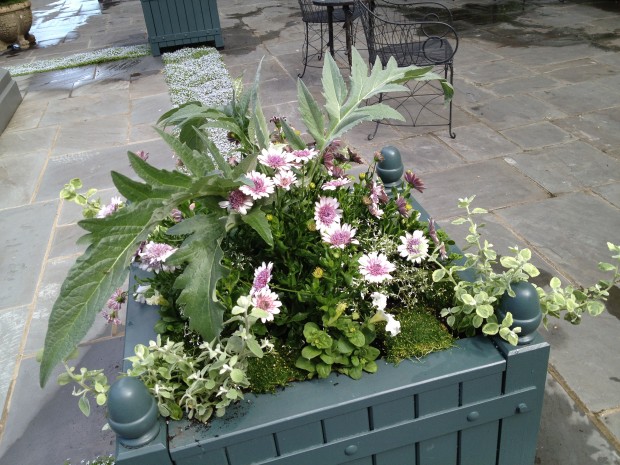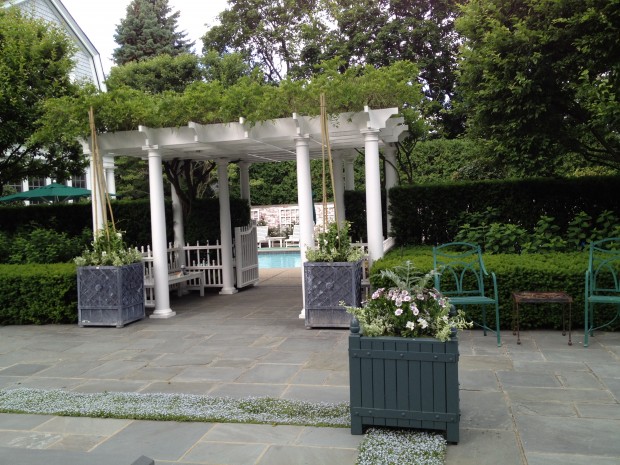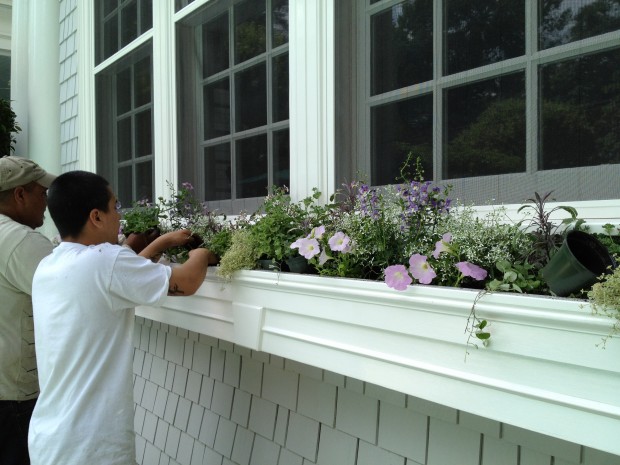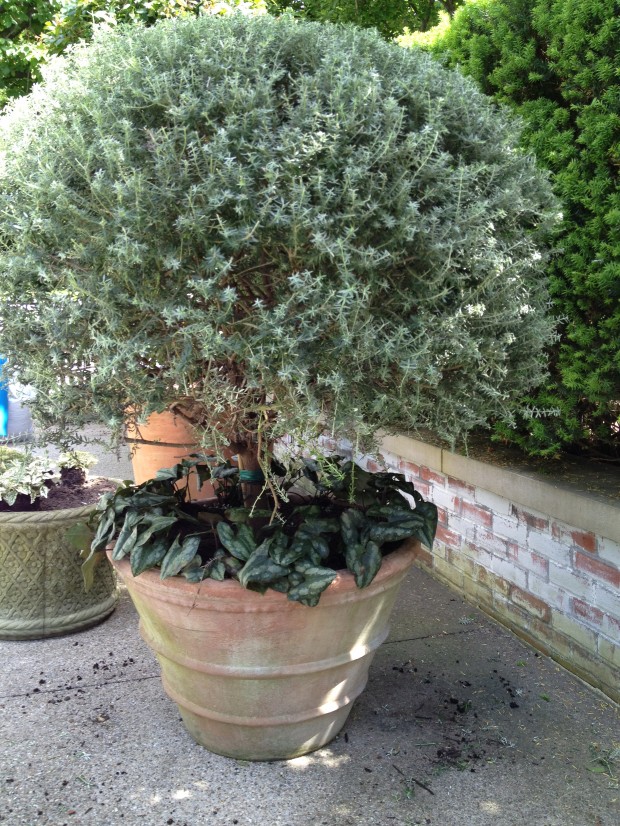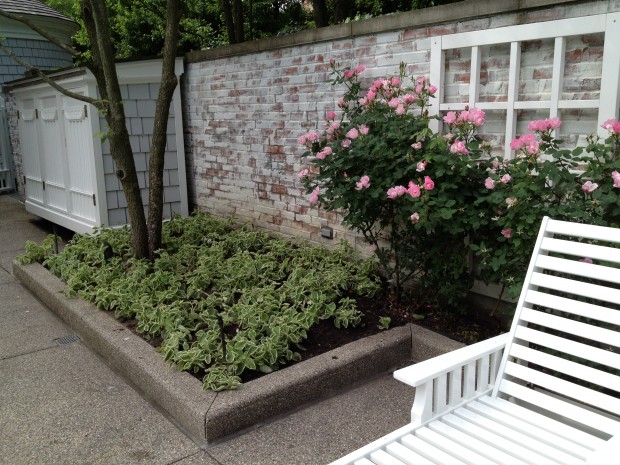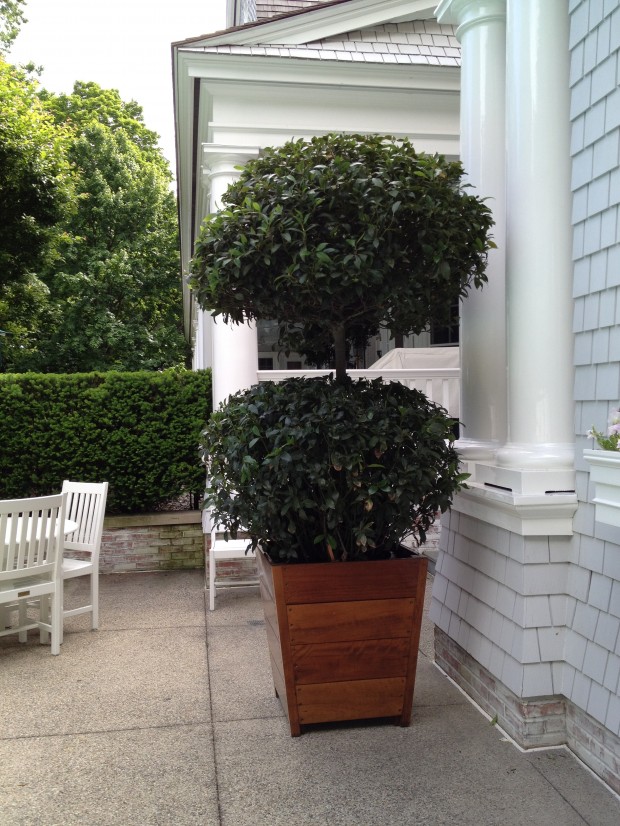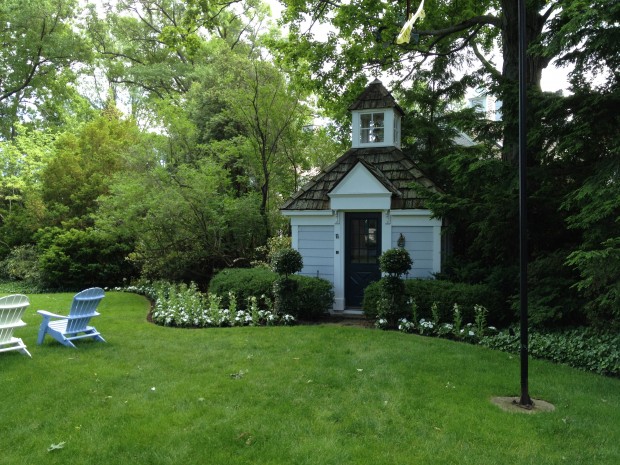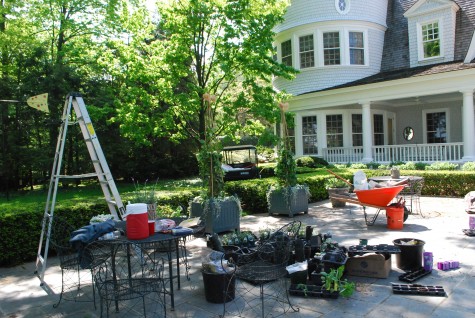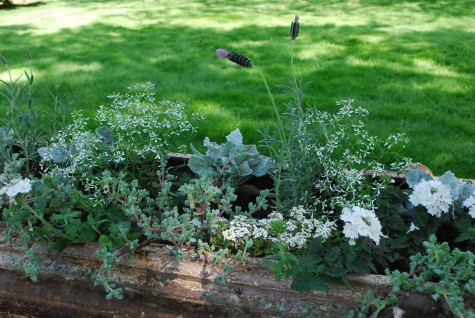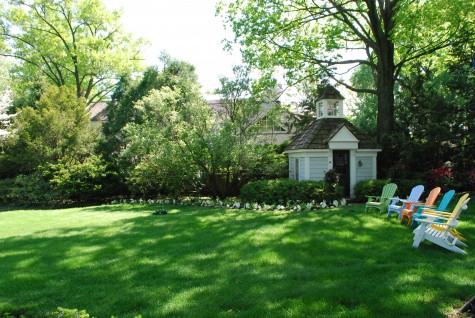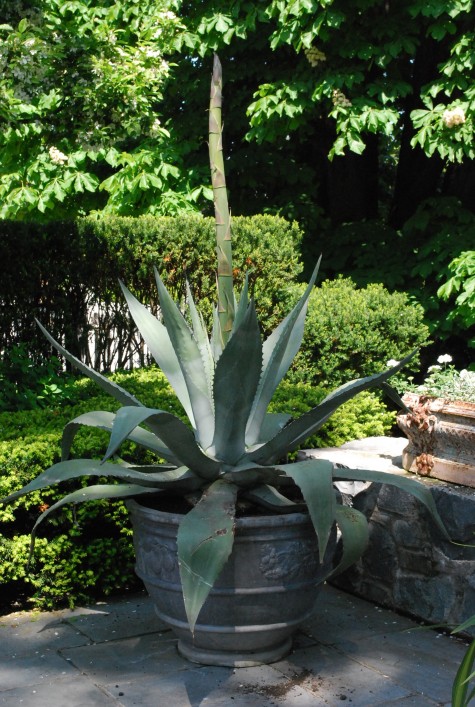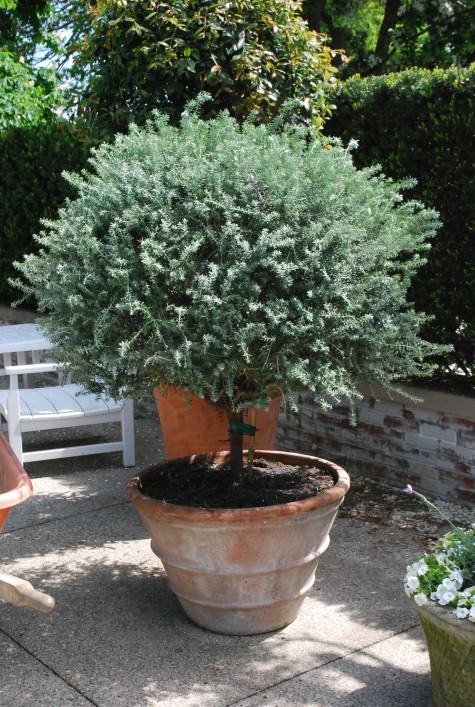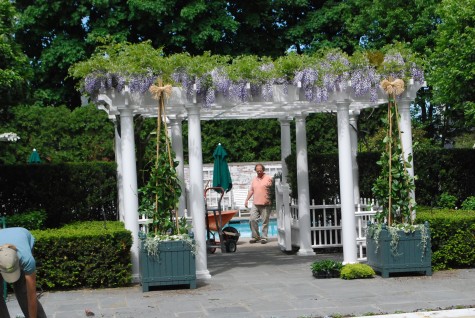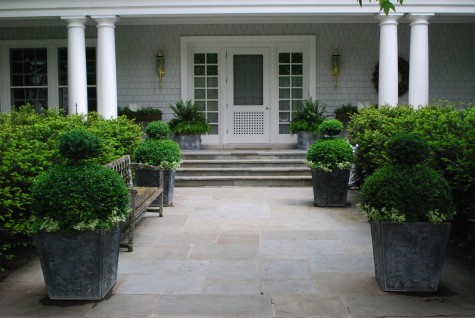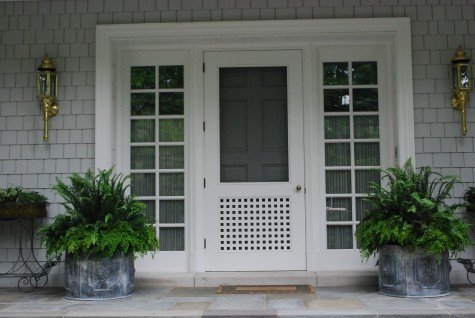My work life from 4:30 am until 6 pm every day this time of year is all about planting the containers and annual flowers. Lots of them, for lots of clients. The 90 degree weather we had a few weeks ago has eveything believing that the summer season is already half over. The weather is perfect and warm-where are you?? The saving grace of this very short, pressure packed, and intense season is the opportunity to get up close and focus on container plants. This year, I have taken a big fancy to the euphorbia cultivar known as Diamond Frost. This utterly drought resistant and casually airy white blooming annual plant makes all of the more glaringly stiff growing annual plants look better. More graceful.
This client likes green above all. All of the forms and textures of green. White is good. This year, the plantings have moved away from obviously tropical plants like agave. The look is softer, more ferny. The Belgian boxes set around the fountain began with 3-D silver osteospermum-planted all around a centerpiece of cardoons. I know cardoons border on that strikingly architectural look, but the daisies will help tone that down. Frilly white petunias, scotch moss and variegated licorice completed the planting in these boxes. To loosen up the entire planting-each box got 4 diamond frost euphorbias.
A terrace can easily represent a garden. A gardener’s point of view. In this terrace garden, woven wirework furniture, antique stone and vintage English faux bois pots, green painted Belgian boxes and a striking 19th century American cast iron fountain have green company of the most sublte sort. The Diamond Frost euphorbia will add a little froth to the mix.

This landscape is formal, and restrained. Though the architecture of the house is strongly reminiscent of 19th century Nantucket, my client has no problem interpreting the landscape to suit her own tastes. This garden is about a person, not about a building. I greatly admire her love of green plants. I am sure that someday I will tire of all the color, and plant a green scheme at home. Just like hers.
The plantings in the pool garden has a bit more color. The color of the water in a pool asks for a little stronger color from the flowers, unless the pool interior is black. There are no succulents in these window boxes this year. Just subtly colored petunias, the enchanted euphorbia, white variegated thyme and lavender, bicolor angelonia, silver dichondra, and purple variegated sage. Soft, airy, loose.
I have wintered her topiary plants for better than 10 years now. This means some of them are casting considerable shade. This year, a wild European ginger covers the soil in the shade of this old silver germander topiary. The mass of the ginger and its silver variegation makes a lovely contrast to the fine textured germander.
The bed under this dogwood is planted thickly with green and white variegated spreading plectranthus. It fits in so comfortably with the whitewashed brick, the white garden furniture, and the single pink roses. This plectranthus can soften the toughest spot-consider it. The leaves are large, and fuzzy. Though its stems are quite strong, it has an informal habit. Though I primarily use it in containers, it makes an unusual, and unusually beautful annual bedding plant.
This double ball bay topiary is 15 years old. The Belgian box has been finished in marine varnish. This is a lakeside home that gets all manner of bad weather off the lake. All of the painted and stained wood surfaces facing the lake get yearly attention. The age and the look of of this topiary is timeless. There is no need, nor is there any room, to underplant.
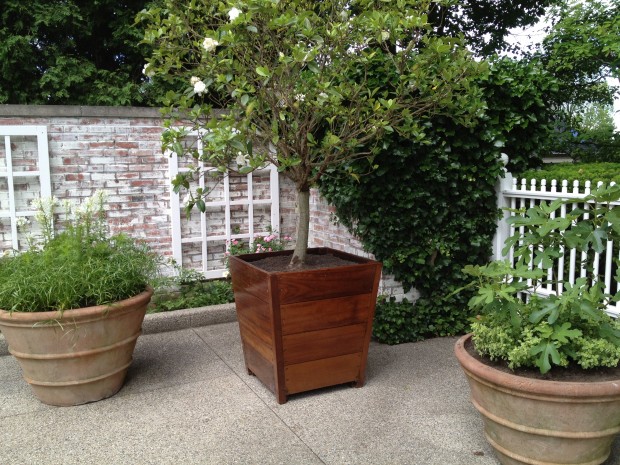 ll
ll
This is a planting that requires lots of old topiaries brought out of storage. Many of the container planting has to do with what covers the soil.What did I underplant this old gardenia topiary with? White polka dot plant, that will be sheared flat. The left hand container is planted with white dwarf casmos and cleome, and edged all around with dward papyrus.
The playhouse garden is planted with white New Guinea Impatiens, and perfume white nicotiana. I like height – I like a mix of plants in an annual beds, unless it is a very contemporary planting.
An old and overgrown boxwood hedge was removed from the terrace last year. A larger pool suround fabricated in steel was installed and painted. My favorite part of this garden? The picture frame of isotoma fluvialitis that breaks up a very large expanse of terrace. It was in full bloom the day I went to plant-a perfect moment.
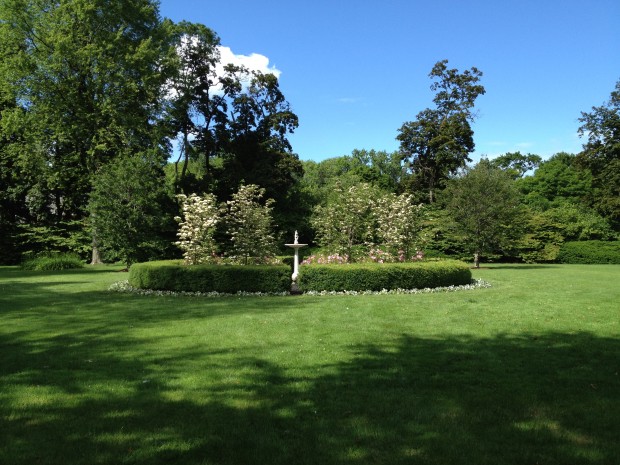
Last Summer we added a group of Venus dogwoods to this boxwood enclosed rose garden. In a few years, those white flowering trees will make a spectacular something of this old and beautiful circle of boxwood. This is a garden that is viewed from far away; it needed some trees. The bed outside the boxwood was planted with cirrus dusty miller, and white Russian petunias. This planting day was a very good day indeed. The Diamond Frost euphorbia will make themselves right at home here.
